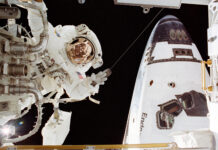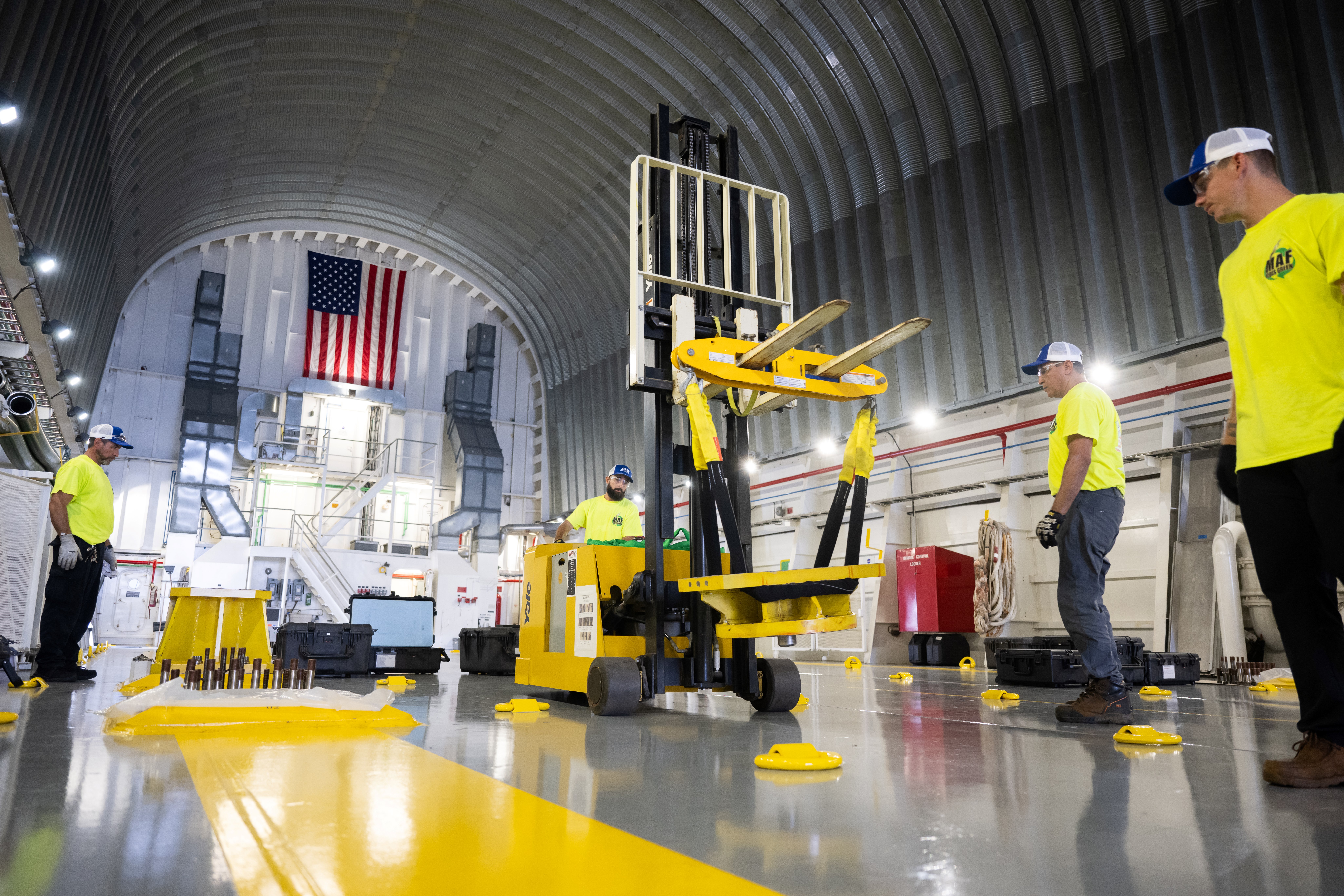NASA’s Pegasus Barge Prepares for Crucial Delivery of SLS Core Stage for Artemis II Test Flight
NASA is making significant strides towards its ambitious Artemis program, which aims to land astronauts on the Moon, including the first woman and the first person of color. A critical component in this endeavor is the Space Launch System (SLS) rocket, a powerful vehicle designed to propel the Orion spacecraft and its crew on their lunar missions. Recently, significant progress has been made in preparing the SLS core stage for its journey to the Kennedy Space Center (KSC) in Florida, where it will undergo final integration and testing.
Preparing the Pegasus Barge
The Pegasus barge, a key asset in transporting the massive SLS core stage, is undergoing final preparations for its 900-mile journey from NASA’s Michoud Assembly Facility in New Orleans to the Kennedy Space Center. On July 10, team members began installing pedestals aboard the barge to securely hold the core stage during transit. These pedestals are crucial for ensuring that the core stage remains stable and undamaged throughout the journey.
Originally used to ferry external tanks for the Space Shuttle program, the Pegasus barge has been extensively modified and refurbished to accommodate the much larger and heavier SLS core stage. The core stage itself measures an impressive 212 feet in length and 27.6 feet in diameter, making it the largest rocket stage ever built by NASA and the longest item ever shipped by a NASA barge. To accommodate this, the Pegasus barge now measures 310 feet in length and 50 feet in width, equipped with three 200-kilowatt generators to provide necessary power during the voyage.
The Logistics of Transport
Transporting the SLS core stage is a complex logistical operation. The barge will be towed by tugboats and other towing vessels from Michoud to Kennedy. Once it arrives at Kennedy Space Center, the core stage will be integrated with other rocket elements and prepared for the Artemis II test flight, which will orbit the Moon. This meticulous process is crucial for ensuring that every component of the SLS functions flawlessly, as any issues could delay the mission or jeopardize its success.
The Pegasus barge is maintained at NASA Michoud, ensuring it is always in optimal condition for these critical transport missions. The modifications and maintenance of the barge reflect NASA’s commitment to ensuring the success of the Artemis program and its broader goals for deep space exploration.
The Artemis Program: A New Era of Space Exploration
The Artemis program represents a new chapter in human space exploration. Beyond landing the first woman and the first person of color on the Moon, NASA aims to establish a sustainable human presence on the lunar surface by the end of the decade. This will involve a series of increasingly complex missions, each building on the successes and lessons of the previous ones.
The Space Launch System (SLS) is a cornerstone of this effort. As the most powerful rocket ever developed by NASA, the SLS is designed to carry the Orion spacecraft, astronauts, and necessary supplies to the Moon in a single launch. This capability is essential for the success of the Artemis missions, as it reduces the complexity and risk associated with multiple launches and in-orbit assembly.
Technological Innovations and Collaborations
The SLS is an integral part of a broader infrastructure that includes the Orion spacecraft, advanced ground systems, new spacesuits, lunar rovers, and the Gateway—a space station that will orbit the Moon and serve as a staging point for lunar missions. Additionally, NASA is partnering with commercial companies to develop human landing systems that will ferry astronauts from the Gateway to the lunar surface.
One of the key technological innovations of the SLS is its core stage, which houses the rocket’s main engines and propellant tanks. The core stage’s design and construction have involved cutting-edge engineering and manufacturing techniques, resulting in a structure that is both incredibly strong and lightweight.
A Global Effort
The Artemis program is not just an American endeavor; it is a global effort. NASA is collaborating with international partners to achieve its goals. For instance, the European Space Agency (ESA) is providing the service module for the Orion spacecraft, which will supply power, propulsion, and life support systems for the crew. This international collaboration underscores the global significance of the Artemis program and its potential to inspire future generations of scientists, engineers, and explorers.
The Road Ahead
As the Pegasus barge prepares to transport the SLS core stage to Kennedy Space Center, the excitement and anticipation for the Artemis II test flight continue to build. This mission will be a critical step towards achieving NASA’s goal of returning humans to the Moon and eventually sending astronauts to Mars.
The Artemis program’s success will depend on the seamless integration of numerous complex systems and the unwavering dedication of thousands of scientists, engineers, and technicians. As NASA continues to push the boundaries of what is possible in space exploration, the world watches with anticipation, eager to witness the next giant leap for humanity.
Good to Know: Historical Significance and Future Prospects
Understanding the historical context of the Artemis program provides a deeper appreciation of its significance. The last time humans set foot on the Moon was during NASA’s Apollo 17 mission in 1972. Since then, space exploration has evolved significantly, with advancements in technology and a renewed interest in lunar exploration.
The Artemis program aims to build on the legacy of the Apollo missions while incorporating modern technology and international collaboration. By establishing a sustainable human presence on the Moon, NASA hopes to gain valuable experience and knowledge that will be essential for future missions to Mars and beyond.
In addition to its scientific and exploratory goals, the Artemis program also aims to inspire the next generation of explorers. By showcasing the possibilities of space exploration and the importance of international collaboration, NASA hopes to foster a new era of innovation and discovery.
Conclusion
The preparation of the Pegasus barge for the transport of the SLS core stage marks a significant milestone in NASA’s Artemis program. As the barge embarks on its journey to Kennedy Space Center, it carries with it the hopes and aspirations of countless individuals who have dedicated their lives to advancing human space exploration.
With the Artemis program, NASA is poised to make history once again, demonstrating the power of human ingenuity and the enduring spirit of exploration. As we look to the future, the Artemis missions promise to unlock new frontiers, expand our understanding of the universe, and inspire generations to come.
For more Information, Refer to this article.
































